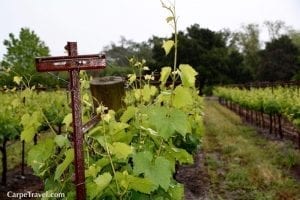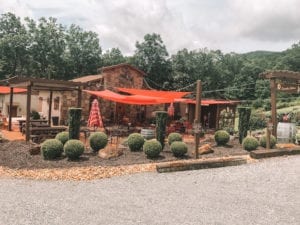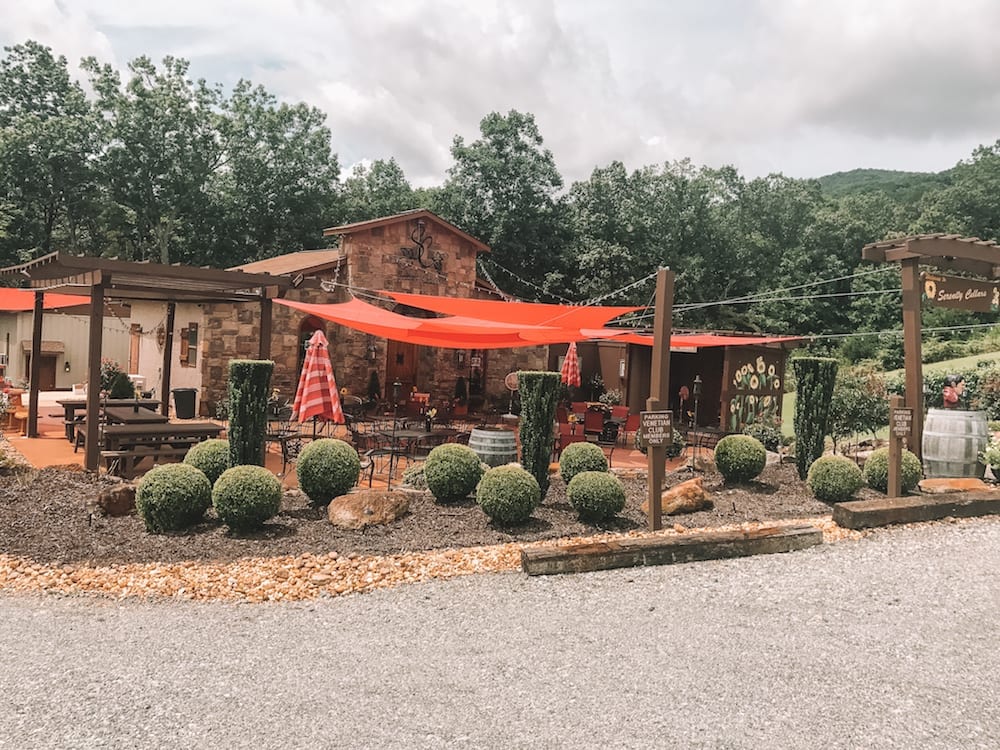Discover Georgia
Wine Country
Our Georgia Wine Travel Guide shares a brief history of the state's wine country, terroir, where to sip, where to stay and things to do beyond the vines.
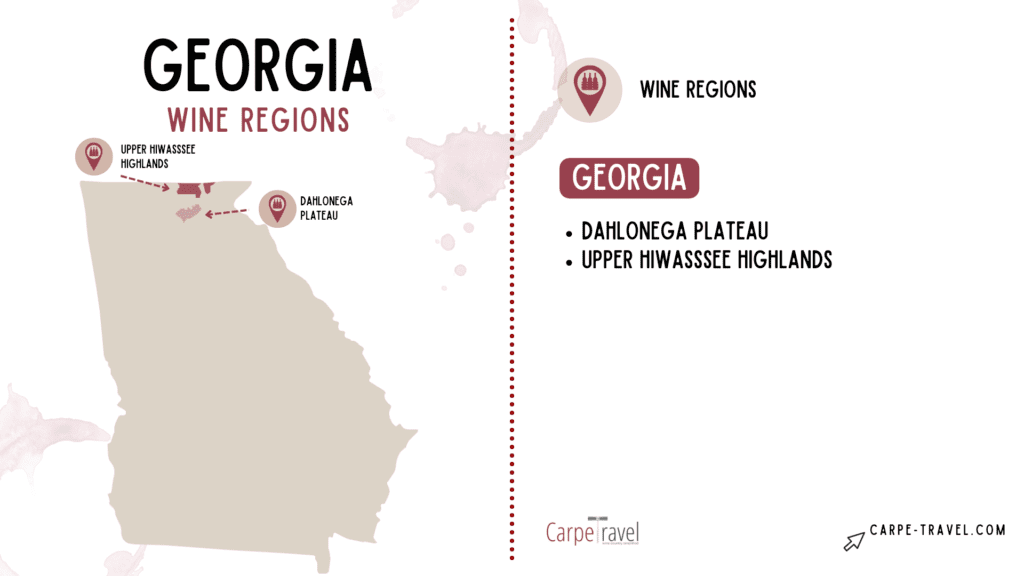
WHERE IS GEORGIA WINE COUNTRY?
Georgia wine country lies in the hilly and mountainous northwest region of the state but it is just four hours to the beachy shoreline of Savannah.
BEST TIMES TO VISIT
Georgia wine country boasts moderate climates all year-round so many tasting rooms will be open no matter what season you visit. Wine harvest is in the autumn, so if you visit then, call ahead for accommodations. Springtime in Georgia wine country is lush with bud break and new wines are often released in the spring. Summer in the south can be hot and humid and early autumn offers a break from that. Georgia wine country is to be enjoyed during every season.
GETTING THERE
Out-of-towners fly into Athens-Ben Epps Regional Airport or Hartsfield-Jackson Atlanta International Airport. Just 45 minutes from Athens, take US-129N and GA-124S. Atlanta is just over one hour away via I-285E and I-85N. Pick up a rental car at the airport and head to Braselton, which makes the best starting point to embark on Georgia’s Official Wine Highway.
TOP GRAPE VARIETIES IN GEORGIA
Most of the wine in Georgia is produced from native or hybrid grapes such as Norton Cynthiana, Concord, Muscadine, and Scuppernong. Hearty hybrids like Traminette, Chambourcin, Blanc du Bois, Seyval Blanc, and Petit Manseng can be found along with traditional Vitis Vinifera grapes including Albarino, Chardonnay, Viognier, Merlot, Cabernet Franc, and Cabernet Sauvignon. Georgia is one of the largest producers of Muscadine wine in the United States.
RED Wine Grapes
- Norton Cynthiana
- Cabernet Sauvignon
- Merlot
- Petit Verdot
- Chambourcin
HISTORY OF GEORGIA WINE COUNTRY
Georgia is known more for its illustrious Antebellum era than its wine. With its then palatial estates decked out in the finest furnishings, surrounded by fragrant flower gardens, juxtaposed against acres and acres of cotton fields, the Georgia of Gone With the Wind seemed elegant and staid.
After the Civil War, many plantations committed acreage to grow food crops like the world-famous Georgia Peach, first introduced to the state in 1857 by Samuel H. Rumph, a legacy horticulturist. Rumph’s hybrid Elberta peaches first attained commercial success in 1875, landing Georgia on the global stage for its luscious fruit. But, did you know Georgia has been growing wine grapes for nearly as long?
Georgia was once a major producer of table grapes and a significant amount of wine was vinified in the 19th century. As one of the centers of the global temperance movement, Georgia was an early adopter of Prohibition, passing laws against production and consumption in 1907, 12 years before the nation adopted the policy. After passing the 21st amendment repealing the 18th amendment, home wine producers went into business all over the United States, including Georgia. It wasn’t until the 1980s that Georgia’s modern wine industry was born.
Three wineries founded during the 1980’s industry resurgence are still producing wine: The Georgia Wine Company, Château Élan, and Habershaw Vineyards and Winery. The industry nearly doubled in the last decade, with 57 dedicated Georgia wineries and vineyards, and plans to continue to expand.
What is an AVA & Why Should You Care?
The short answer is that an American Viticultural Area (AVA) is a federally designated wine region in the United States. The longer answer is that the TTB defines and approves AVAs in the U.S. based on specific geographic or climatic features that distinguish the area from the surrounding regions which affect how grapes are grown. Unlike Europe, AVAs are not based on political geographical boundaries and do not have regulations as to what grapes can be produced and aging requirements.
Why does it matter? There are a lot of reasons but the main one is to protect the consumer – all you wine sippers – so they know the wine they are buying is really from where it says it is. More on what AVAs are and why they matter.
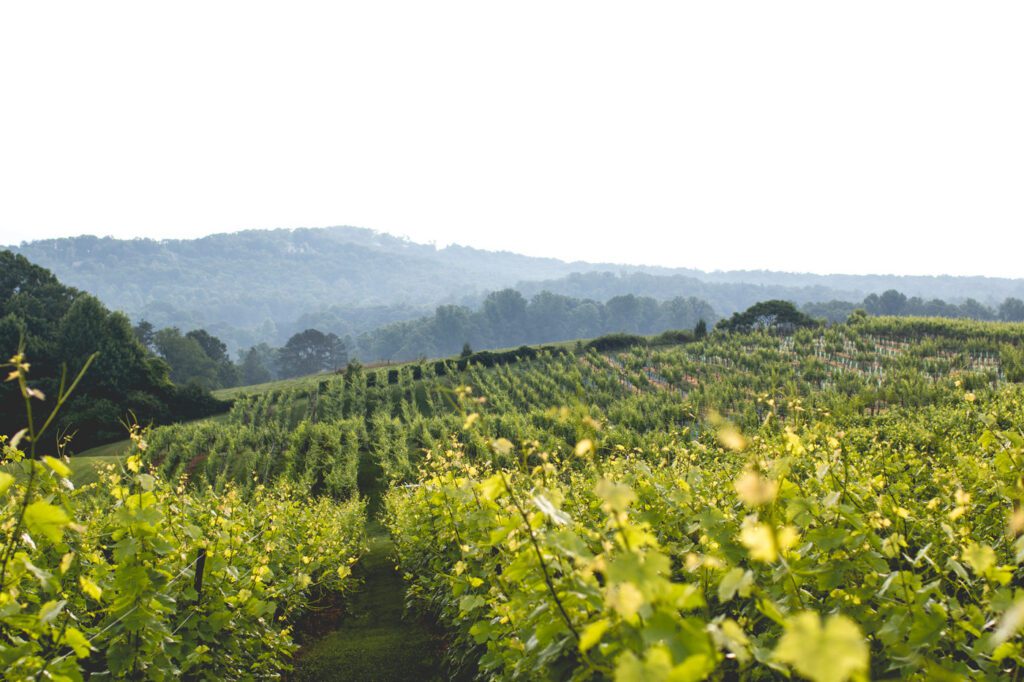
TERROIR
Claiming soils and terrain similar to that of Piedmont, Italy, known for their stellar Barolo, Barbaresco, and Moscato d’Asti, Georgia produces award-winning Traminette, Merlot, Viognier, and other wines from vinifera grape varietals and hybrid grapes.

Georgia shares its first designated wine region AVA (American Viticulture Area) with North Carolina. The Upper Hiawassee Highlands AVA was established in 2014. It spans Northern Georgia and South Western North Carolina along the southern end of the Blue Ridge Mountains. In Georgia, three counties; Fannin, Towns, and Union, are included. In North Carolina, the AVA encompasses Cherokee and Clay counties.
Vineyards flourish along the Hiawassee River, whose headwaters are in Towns County Georgia. The river winds into North Carolina and then flows west into Tennessee. The Upper Hiawassee Highlands AVA has mountainous landscapes flanked by sandy beaches and the Atlantic Ocean. Its elevation ranges from 1300-2200 feet high, which is prominent when coming from seal-level just miles away. The terroir is sloping hills with gravely well-draining soil, ideal for grape growing. Because of its elevation the region is cooler and less humid, although it is still considered sub-tropical. The entire AVA is 690 square miles with 54 acres under vine. There are currently 57 active Georgia wineries and nine vineyards. The main towns in this AVA include Ellijay, Dahlonega, Tocca, White, Jasper, Helen, Hiawassee, Cleveland, Talking Rock, Rabun Gap, and Young Harris.
In 2018, the Dahlonega Plateau earned its own AVA designation, for the robust wine production around the town of Dahlonega. It is located in the foothills of the Blue Ridge Mountains and boasts gravely rich soils, fertile landscapes, rushing waterfalls, and rivers that were the first to sport gold in 1829 inciting the nation’s first gold rush.
WHERE TO SIP
The state of Georgia was once a major producer of table grapes and a significant amount of wine was vinified in the 19th century. As one of the centers of the global temperance movement, Georgia was an early adopter of Prohibition, passing laws against production and consumption in 1907, 12 years before the nation adopted the policy. After passing the 21st amendment repealing Prohibition (the 18th amendment), home wine producers went into business all over the United States, including wineries in Georgia. But it wasn’t until the 1980s that Georgia’s modern wine industry was born.
Today there are two official AVAs and 57 wineries in Georgia and more popping up each year. There is a lot to sip in this budding wine country. But where to start? To help, we’ve pulled some of favorites based on the quality of wine and wine tasting experiences to be had at wineries in Georgia. We’ve pulled together an in-depth list of the best wineries in Georgia laid out by towns to make your Georgia wine tasting easy to plan and sip in. Here are just a few favorites to make sure you sip.
The Georgia Winery
Château Élan Winery Spa & Resort
Kaya
Winery
Planning Your Georgia Wine Country Vacation
GEORGIA WINE TASTING ITINERARIES
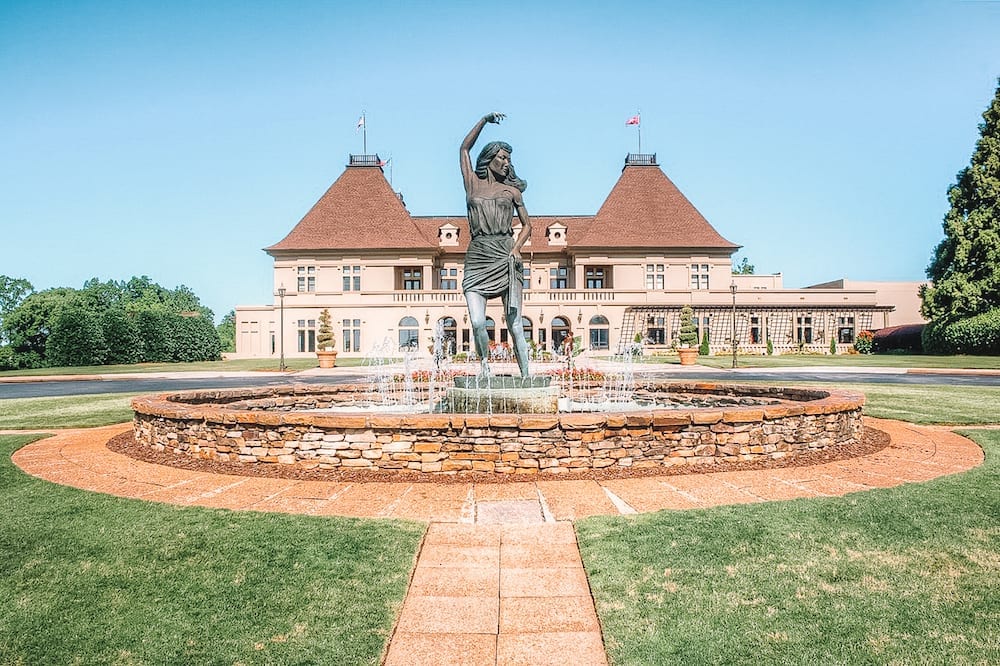
Simone FM Spinner is a top-rated university wine lecturer and certified sommelier with thirteen advanced wine certifications, a bachelor’s and master’s degree in wine studies, and is pursuing her doctorate studying the socioeconomic and cultural effects of climate change on wine. She is a sought-after wine consultant, public speaker, and published author. She organizes wine events and international wine tours through her company Wine Rocks & Chasing Grapes™©. Her website is WineRocksLLC.com

